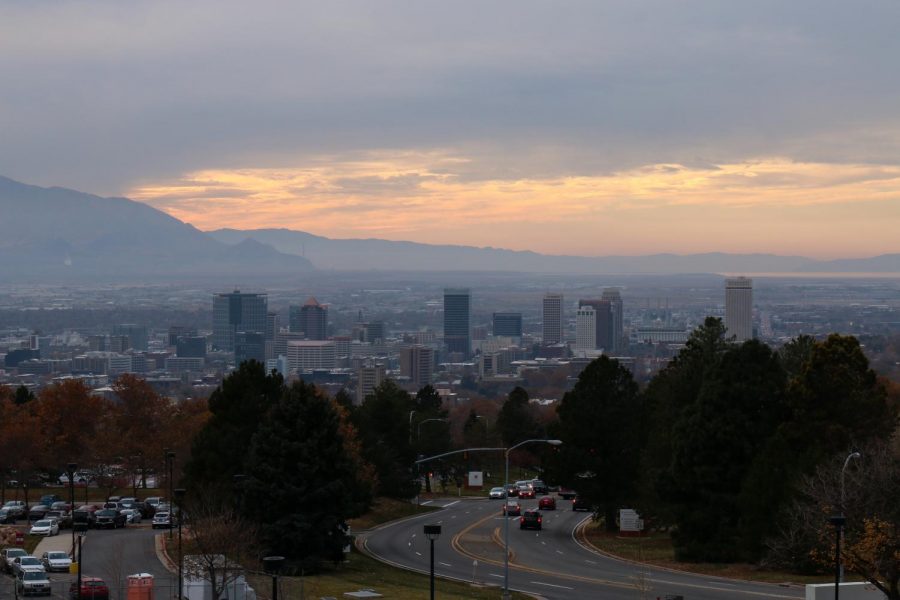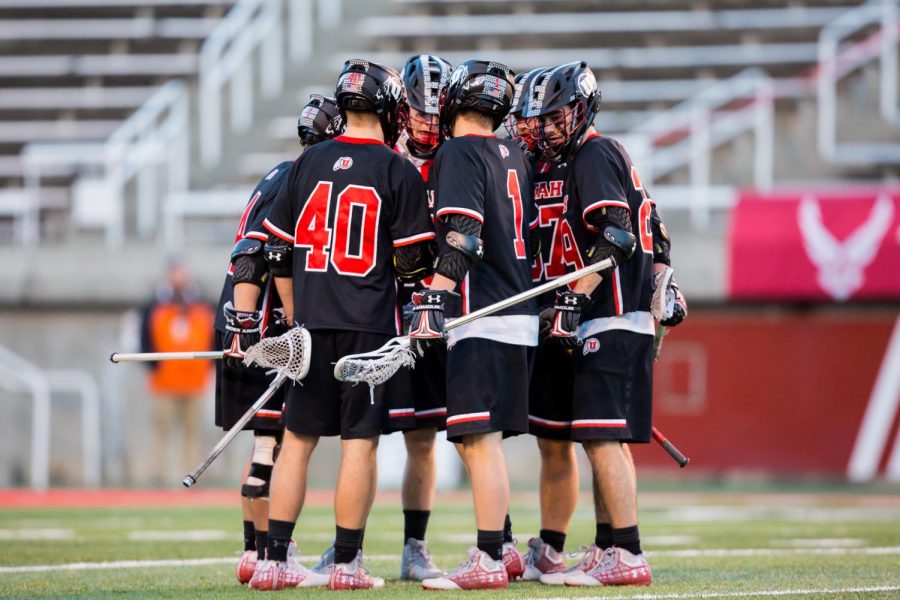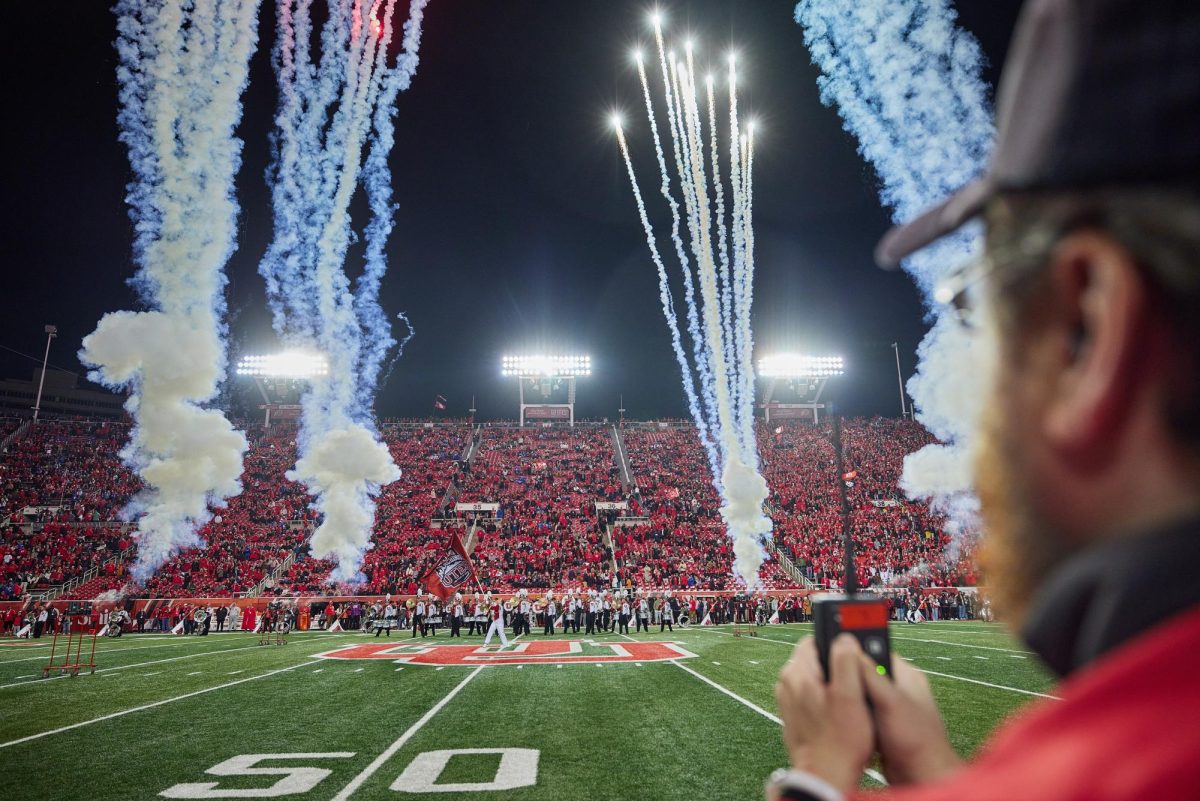American Indian Mascots Continue to be Called into Question
Carl Moore, Chairperson of SLC Air Protectors
Davina Smith, former executive director of SLC Air Protectors, at the protest at the Capitol on Jan. 25, 2020.
February 26, 2020
American Indian mascots have been a controversial topic for many universities and sports teams in the past. In recent years, there has been a movement and a call from tribes to retire these mascots entirely. For the University of Utah, who uses the “Utes” name as a way to identify fans and students, this is an issue that directly impacts the U.
Memorandum of Understanding
In 1996, the U ditched the previous mascot “the Ute” for a red-tailed hawk named Swoop. In 2005, a memorandum between the U and the Ute Indian Tribe was created to build relationships and respect in the wake of growing consciousness from the NCAA regarding American Indian mascots.
The current memorandum follows those goals and was renewed and signed in 2014. It is specifically between the U and the Uintah and Ouray Ute Indian Tribe, stating the tribe is in full support of the use of “Ute” for the U’s sports programs.
The Memorandum of Understanding says, “The Ute Indian Tribe’s goals are two-fold: first, to build genuine respect and understanding of the Tribe’s history, culture and contributions to the state (past, current and future); and second, to have the University assist tribal members in helping their children lead healthy lives and be prepared to pursue a college education.”
Fred Esplin, Vice President of University Relations and the U’s primary contact with Ute Indian Tribes for the past two decades, said the MOU with the tribe provides assurance that the university will help its students and fans understand the proud legacy of the Ute Indian Tribe. “The university is honored that the Ute Indian Tribe has given its permission to use their name for our athletic teams,” he said.
Both the U’s marketing team and the athletics department provide education on the tribe through print and online materials, and through video spots about the tribe during games.
“We are especially appreciative of the cultural demonstrations which the tribe provides at halftime during one of our home football games each year,” Esplin said.
While the memorandum was signed by the Uintah and Ouray Indian Tribe, two others, the Ute Mountain Ute Indian Tribe and the Southern Ute Indian Tribe, did not sign the MOU.
Charles Sepulveda, a citizen of the tribes Tongva and Acjachemen and an assistant professor in ethnic studies, said he still finds many uses of the word “Ute” around campus as problematic, despite the tribe’s agreement to its use.
He pointed to one specific example he did not agree with, a poster around campus promoting the Feb. 14 women’s basketball game against Stanford. The promotion read, “I want Ute” as a play on a Valentine’s card.
“Uses such as that, where Ute is used to not refer to Native people past, present and future, is disrespectful to me,” Sepulveda said.
The Residence Hall Association has discouraged the use of the name. Employees of the RHA, including student Resident Assistants and Social Justice Advocates, are not allowed to wear anything with the word “Ute” or the drum and feather symbol on it.
Additionally, the Social Justice Advocates have hosted an event for six years called “Utah Fan Am I,” where they talk about the history between the U and the Ute Indian Tribes, the difference between cultural appropriation and appreciation, and why they discourage the use of the word “Ute.” They emphasize the phrase “Go Utah” instead of “Utes,” and give out shirts students can wear in place of “Utes” or the drum and feather slogan.
Studies by the American Psychological Association also called for the retirement of all American Indian mascots, symbols, images and personalities by schools, colleges, universities, athletic teams and organizations since 2005. They cited “the particularly harmful effects of American Indian sports mascots on the social identity development and self-esteem of American Indian young people.”
Protest over H.J.R. 10
“Mascots and logos make these stereotypes of people and it can separate, it can marginalize, it can confuse, intimidate and harm our American Indian children and create barriers to their learning,” said Eileen Tinhorn Quintana, program manager of the Nebo Title VI Education Program in Nebo School District and a proud Navajo woman.
Quintana was asked to give the opening prayer at a protest that occurred on Jan. 25, 2020. She stood in front of various members of American Indian tribes and their allies that gathered on the steps of the capitol, some holding signs reading “We are not mascots!”
They were protesting Utah Representative Rex Shipp’s support of bill H.J.R. 10 that would encourage the use of American Indian names, images and symbols unless there is a consensus among the individual Native American people that the mascot should be taken away.
In addition to the effects these mascots have on American Indian youth, Quintana also spoke about this “culturally abusive behavior” and its propagation of false stereotypes of entire tribes.
“Our pictures are who we are. Part of our biggest misunderstandings and stereotypes are because of lack of information. We only make up a little over 1% of the population. That makes it harder for us to get out accurate information. When you have people who are non-native like Shipp saying that they want the right to use our pictures … in whatever manner they want, that’s not right,” Quintana said.
Quintana said she was grateful to be surrounded by peers, family, tribal presidents and allies. However, she was disappointed to not see the faces of legislators in the crowd.
“Who I didn’t see were leaders like the mayor. That would have been nice to have heard and seen our representatives, the ones that are supposed to represent and listen to our voices so that they can represent us in making laws. I would have liked to have seen more of them,” Quintana said.
She often tells her students about the meaning of being “five-fingered”: “It doesn’t matter what nation you come from, it doesn’t matter what color your skin is, it doesn’t matter what language you speak, it is all human. We are all from one tribe here on the globe,” Quintana said.
Using this concept of being five-fingered to share her hopes for a more unified future, she believes that in order to create lasting change that will improve the lives of seven generations down the line, it is necessary to respect one another and unite.
“I am very proud to be American Indian. Our history is one of cultural persistence, creative adaptation, renewal and resilience,” Quintana said.
She considers the protest to be a success because they were able to amplify the voices of those affected — American Indians spoke out against a bill that would directly affect them.
“A lot of people will say ‘But we’re honoring you Indians, you should feel honored.’ No. It is not an honoring. It’s a mockery of our cultures,” she said.
“H.J.R. 10 was a subtle example of how colonialism is still alive in 2020. It attempted to solidify racism by appealing to the emotional ties of immigrants/European settlers and ignoring the continued psychological violence on the original peoples to whose land they occupy,” said Carl Moore, chairman of Peaceful Advocates for Native American Dialogue and Organizing Support, who was in charge of organizing the protest.
The bill has been killed for the time being. “It was a victory indeed. I do appreciate that Rep. Shipp was willing to listen to indigenous leadership and I hope that his said motivation of using this bill as an educational tool can be turned to an educational tool recommended by the local indigenous people themselves,” Moore said. “I am a strong believer in respecting all beings and being able to sacrifice some comforts in order to give respect and honor to others.”
k.silverstein@dailyutahchronicle.com














Ashley Allen • Mar 3, 2020 at 7:12 am
Thank you for your meaningful news article. I recently wrote a paper for class on this issue after reading the APAs reaching findings on the poor impacts of such mascots on tribal members well-being. I also noticed the Valentine’s Day basket ball team poster on campus and was horrified by the disrespectful nature of it. I believe we need to do away with our mascot once and for all, regardless of an agreement with some tribe members. Not all tribe members agree with the mascot and people are actively stigmatized and misunderstood. I am a white woman, who is not directly impacted, but I believe it is important to use my racial privilege to speak up for those who are marginalized. I hope this issue gets the attention it deserves.
Thank you,
Ashley